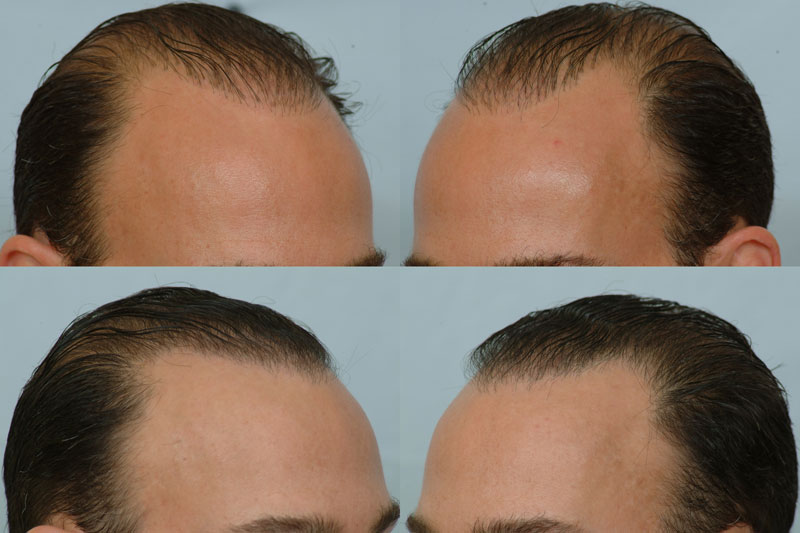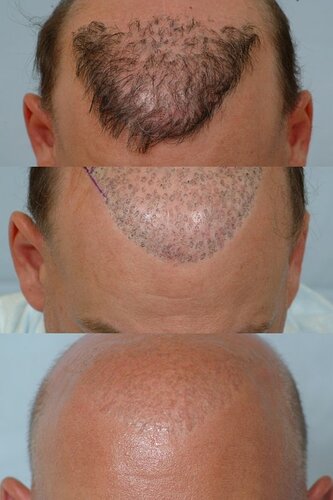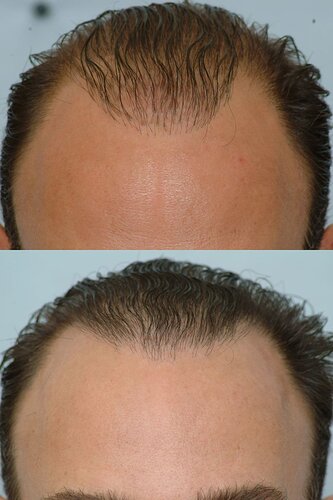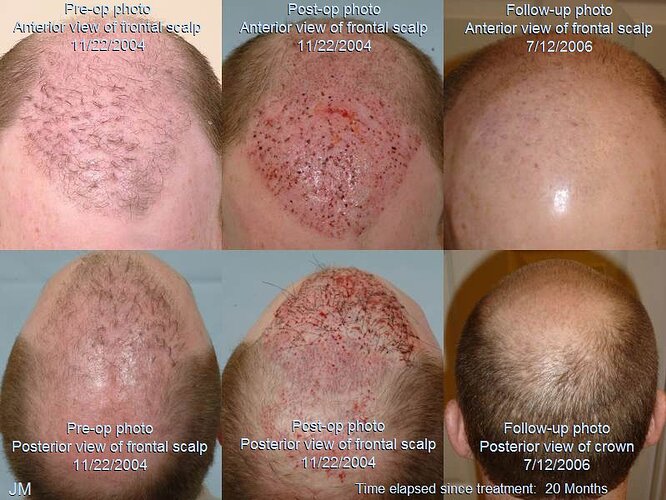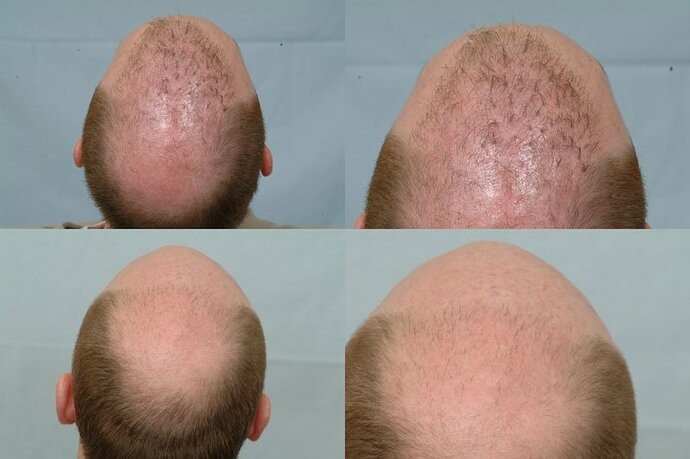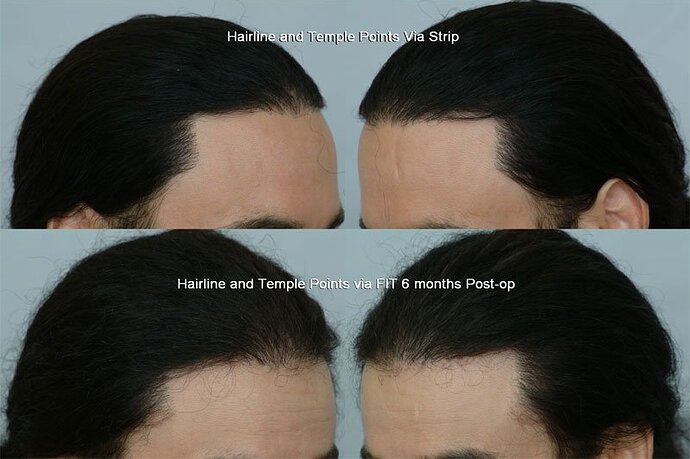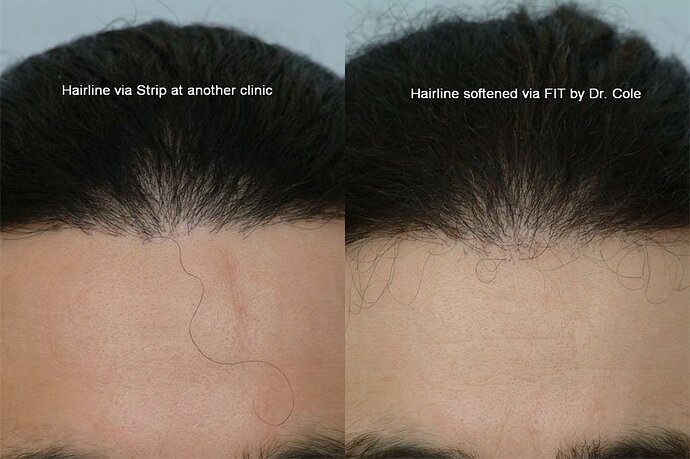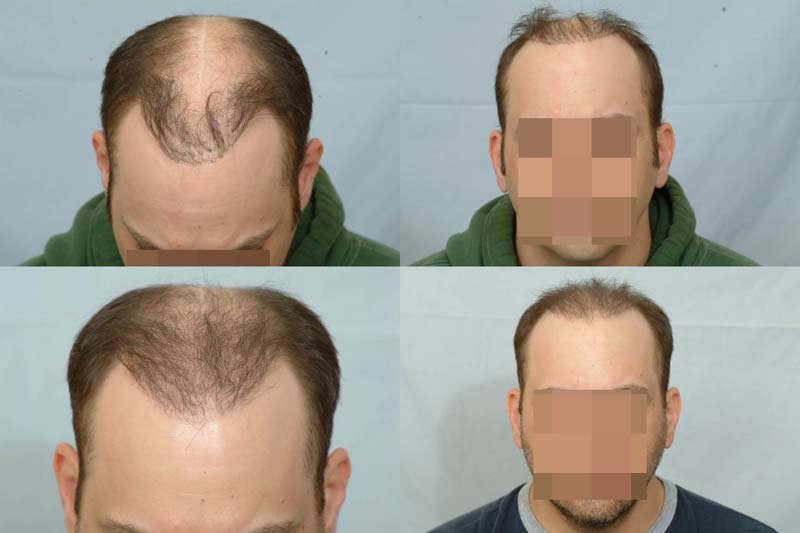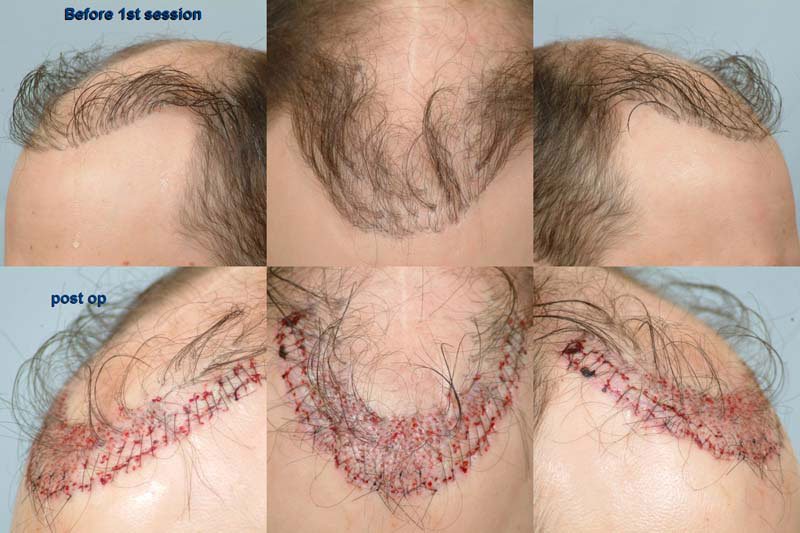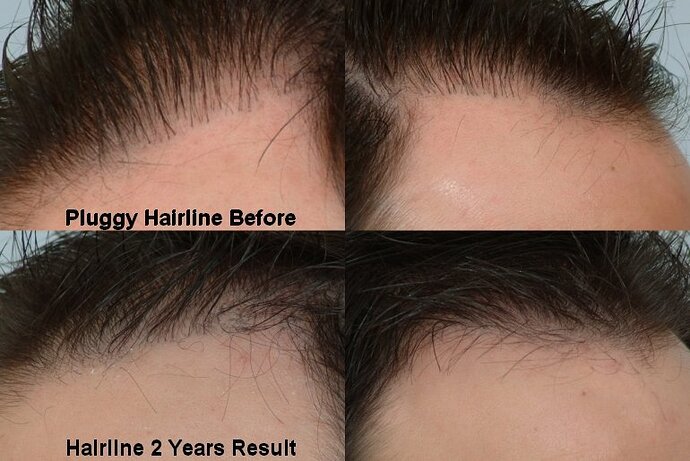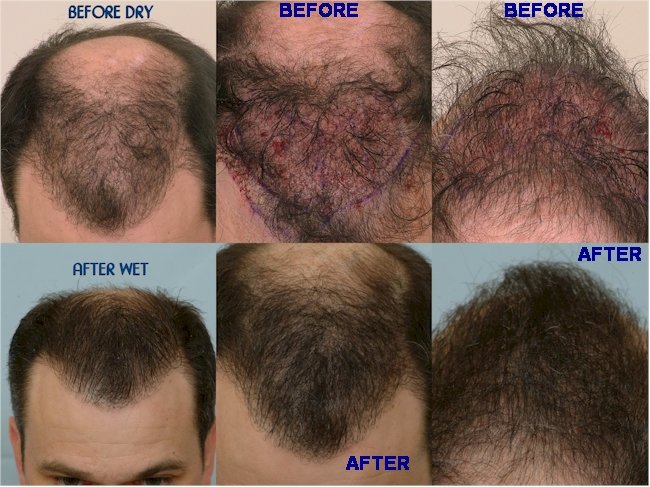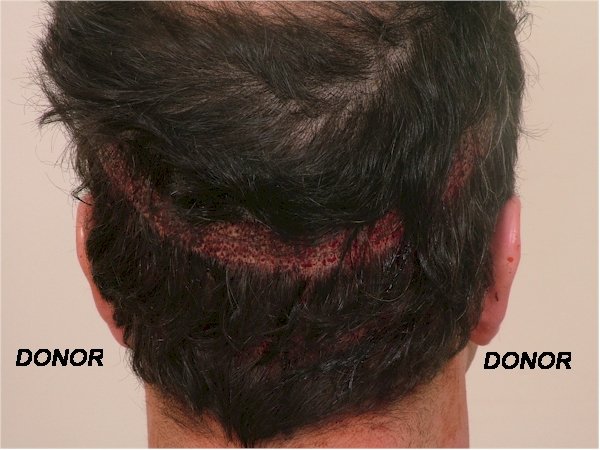Hi forum views and bigmac,
Here are the some results of patients who came to us from well-know clinics. There are many photos and a couple videos showing rebuilt hair lines or naturally balding heads. When we perform repair cases, we like to ask our patients whether their goal is to have more hair or to be naturally bald. Of course there are numerous degrees of coverage that may be achieved.
When a patient wants to have hair and be natural, the best way to transform them is to add hair without taking out hair. Once the new grafts have grown in, we can selectively remove grafts that are very unnatural or we can try adding a little more. Taking hair out is a little risky because the patient usually never gets a 100% return on the removal process. If you take out 50 hairs, you might get only 30 back. We encourage all of our repair patients to brainstorm on the subject before making any decision.
When an individual looks like they underwent a hair transplant procedure, they are willing to try just about anything to look natural. Once they look natural, they often change their goals and sometimes want to have more hair, as well. This is one of the risks associated with just taking out grafts and I’ve seen it happen before. We’ve had patients who wanted to be naturally bald. Once we go through the extensive process of hair removal and making them look naturally bald, we have seen patients come back and suddenly have a desire to have more hair that looks natural. Therefore, we strongly encourage patients to decide their ultimate goals before we begin. If patients want to add more hair and want it to appear natural, it is usually better to add first and take out later if required because you will usually find that you do not need to remove much hair. It is very important that the younger patinets consider the long term consequences of trying to have more hair. The must all seriously consider the financial commitment involved because it can exceed the budget of many younger patients. I have attached some repairs accomplished via CIT, please observe the intricate details involved.
Patient 1
Patient 2
Patient 3
Patient 4
Patient 5
Patient 6
